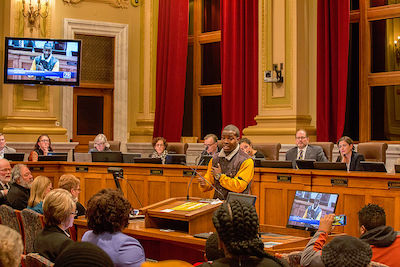Moving Forward, Remember Past Local Government Resolutions
We have already seen Virginia and Missouri take up legislation to preempt local control and deter municipal networks. Although bearing innocuous names such as the “Virginia Broadband Deployment Act,” these bills stifle competition instead of empowering communities.
Local governments, however, have often stepped forward to champion municipal networks and push back against state preemption bills. We’ve collected several over the years. Let these excerpts of resolutions from years past inspire you throughout the rest of 2017:
2011 - Chapel Hill, North Carolina: “WHEREAS, historically it was government that funded much of the current corporate telecommunications infrastructure in the United States and government paid for and developed the Internet on which these providers depend for their profit…” (Read more here.)
2013 - Alpharetta, Georgia: “WHEREAS, House Bill 282 would tie the hands of municipal officials in their efforts to build digital networks they need to attract economic development and create a high quality of life for their citizens...” (Read more here.)
2014 - The Louisiana Municipal Association: “WHEREAS, local governments, being closest to the people are the most accountable level of government and will be held responsible for any decisions they make...” (Read more here.)
Many other cities have also passed resolutions opposing state legislation and encouraging local control, including:




